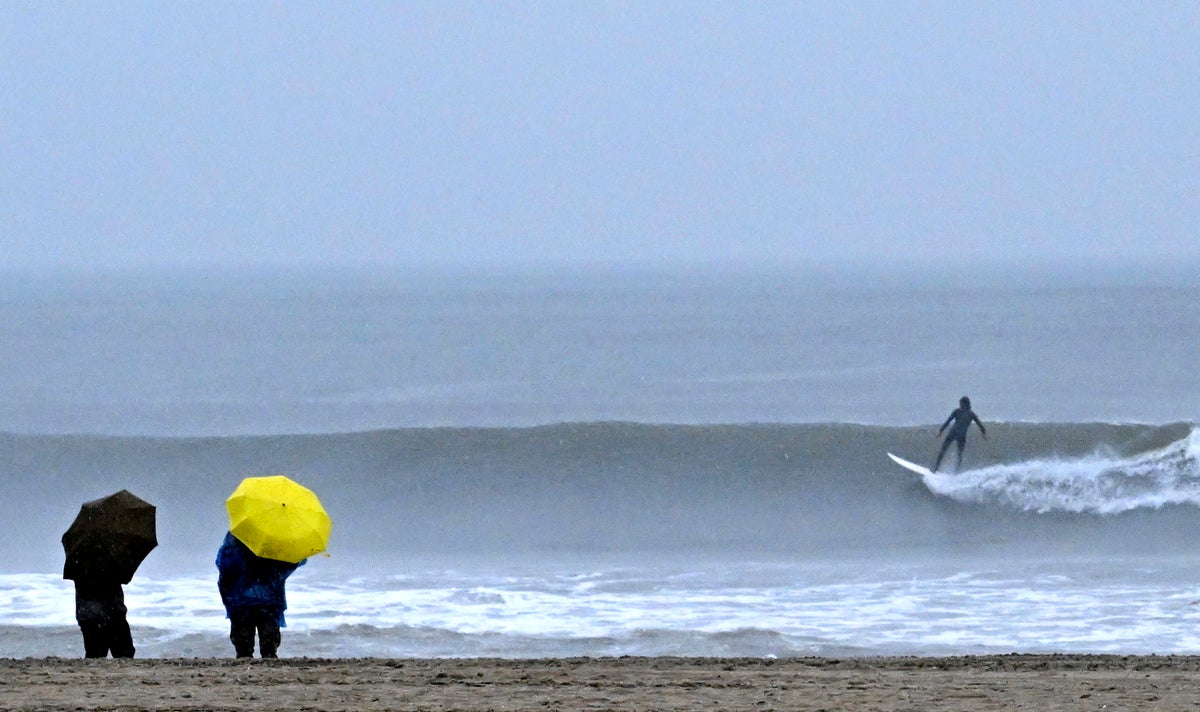
The last in a three-week series of major winter storms was churning through California on Monday, leaving mountain driving dangerous and flooding risk high near swollen rivers even as the sun came out in some areas.
Heavy snow fell across the Sierra Nevada and the National Weather Service discouraged travel. Interstate 80, a key highway from the San Francisco Bay Area to Lake Tahoe ski resorts, reopened with chain requirements after periodic weekend closures because of whiteout conditions.
“If you must travel, be prepared for dangerous travel conditions, significant travel delays and road closures,” the weather service office in Sacramento said on Twitter.
The University of California Berkeley Central Sierra Snow Lab tweeted on Monday morning that it had recorded 49.6 inches (126cm) of new snow since Friday.
A backcountry avalanche warning was issued for the central Sierra, including the greater Tahoe area.
A series of nine atmospheric river storms has dumped rain and snow on California since late December, cutting power to thousands, swamping roads, toppling trees, unleashing debris flows and triggering landslides. Monday's system was relatively weak compared with earlier storms, but flooding and mudslide risks remained because the state was so saturated, forecasters said.
The sun came out in San Francisco, where 20.3 inches (51.5cm) of rain has fallen at the city's airport since 1 October, when California typically begins recording rainfall for the year.
The yearly average for the “water year” is 19.6 inches (49.8cm), "so we’ve surpassed the yearly total with eight more months to go,” the San Francisco weather service office tweeted.
Up to 2 more inches (5 cm) of rain fell Sunday in the soaked Sacramento Valley, where residents of Wilton and surrounding communities were warned to prepare to leave if the Cosumnes River rose further.
The swollen Salinas River swamped farmland in Monterey County. To the east, flood warnings were in effect for Merced County in the agricultural Central Valley, where Gov. Gavin Newsom visited Saturday.
Newsom on Monday signed an executive order to further bolster the state’s emergency storm response and help communities that suffered damage. President Joe Biden declared a major disaster in the state and ordered federal aid to supplement local recovery efforts.
In Southern California, the sun shone in Los Angeles, but winter storm warnings and advisories were still in place for mountain areas, where many roads remained impassable because of mud and rock slides. Two northbound lanes of Interstate 5 near Castaic in northern LA County were closed indefinitely after a hillside collapsed.
Downtown Los Angeles set a rainfall record Saturday with 1.82 inches (4.6cm), the weather service said.
At least 20 storm-related deaths have occurred, and a five-year-old boy remained missing after being swept out of his mother’s car by floodwaters in San Luis Obispo County.
Dry days are in this week’s forecast for California starting on Tuesday.







